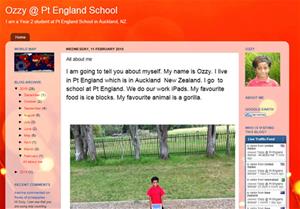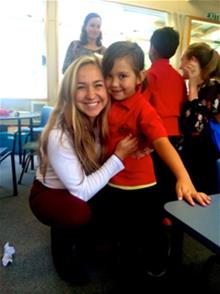 Bloggers from around the world can connect and communicate in real time. Blogging as a digital platform to share ideas, opinions, and information in multimodal formats such as text, image, audio, and video allows young students to generate content for an authentic audience beyond the teacher.
Bloggers from around the world can connect and communicate in real time. Blogging as a digital platform to share ideas, opinions, and information in multimodal formats such as text, image, audio, and video allows young students to generate content for an authentic audience beyond the teacher.
For instance, year two students at Point England School in Auckland, New Zealand, created blogs to communicate with education students at Furman University in South Carolina. This partnership was established prior to the university’s study abroad program to explore international perspectives of education and visit schools in New Zealand. The use of technology to connect prior to their travel allowed these two groups from opposite sides of the globe to learn about each other, their communities, and the role of digital citizenship when communicating in online spaces.
Both sets of students created their own blogs using Blogger and were then paired up to share. They began with a multimodal “All About Me” post including image, video, and text to get to know each other and become familiar with the technology. In Ozzy’s blog, he shared about where he lives, some of his favorite things, and mentioned the use of iPads in his classroom.
The second blog post focused on information about their communities. Ozzy posted about the traditional Maori waka, or canoe, that was at his school as part of a cultural celebration.
He later posted about Anzac Day, a holiday celebrated in New Zealand to honor fallen soldiers during war. Ozzy’s posts helped Ashley, his buddy from the United States, learn more about the culture in New Zealand.
His blog is public, so anyone from around the world can view it and learn about Ozzy and life in New Zealand. In fact, his blog was visited by users in 165 countries. As he says, “Anyone can see my blog… because it is on the Internet.” Ozzy understands the significant role blogs can play to connect with the larger online community, making our global world much more accessible.
Using a blog as a shared space to bring together two communities halfway around the world fostered a sense of a digital community. When the university students arrived in New Zealand and met their buddies face-to-face, a clear connection was already established. When the college students arrived, Ms. Nalder’s year two students, in matching red uniforms, were gathered on the carpet reading with their teacher. In unison, they all whipped their little heads around to see the long-awaited American visitors.
 Rangi, a year two student, jumped up, ran over to Abigail, her American blogging buddy, and wrapped her arms around her. She then eagerly grabbed her iPad and promptly displayed Abigail’s blog. Rangi instantly recognized Abigail and explained that her favorite part of blogging was “meeting our buddies on the computer.” Abigail agreed, “I am so thankful for the way this blogging project allowed me to connect with this beautiful girl who lives on the other side of the world. Meeting her face to face is one of those memories that I will hold on to for a lifetime.”
Rangi, a year two student, jumped up, ran over to Abigail, her American blogging buddy, and wrapped her arms around her. She then eagerly grabbed her iPad and promptly displayed Abigail’s blog. Rangi instantly recognized Abigail and explained that her favorite part of blogging was “meeting our buddies on the computer.” Abigail agreed, “I am so thankful for the way this blogging project allowed me to connect with this beautiful girl who lives on the other side of the world. Meeting her face to face is one of those memories that I will hold on to for a lifetime.”
Blogging mediates literacy practices for today’s global citizens while connecting us despite the miles between us. Some suggested websites for blogging in the classroom include Kidblog, Edublogs, and Quadblogging.
Katie Stover is an assistant professor of Literacy Education at Furman University in Greenville, SC. She can also be found on Twitter.
This article is part of a series from the International Reading Association’s Technology in Literacy Education Special Interest Group (TILE-SIG).